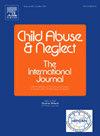古巴和多明尼加共和国的儿童纪律做法有什么不同吗?
IF 3.4
2区 心理学
Q1 FAMILY STUDIES
引用次数: 0
摘要
跨学科实践的跨国比较可能存在问题,原因至少有两个。它们可能依赖于有问题的复合措施,即将实质上不同的个别纪律做法合并为单一措施,并比较大大不同的国家,增加了未测量混杂因素的风险。目的本研究旨在确定古巴和多米尼加共和国(DR)这两个具有许多共同特征的国家之间的个别纪律实践是否存在差异。2019年,参加古巴和多米尼加全国代表性家庭调查的参与者和在家照顾者(85.6%可能是亲生母亲),N= 7374和14772。方法研究人员询问在家庭中随机选择的儿童是否接受了11种纪律措施中的任何一种。比较了全国两个年龄组(1-4岁和5-14岁)中每种做法的流行程度。使用二项逻辑回归来确定国家是否是实践的独立预测因子。结果在两个年龄组中,多米尼加儿童遭受六种体罚中的三种(“打屁股”、“用物体打”、“打脑袋”)的比例更高,而古巴儿童遭受“打肢体”的比例更高。在这两个年龄组中,“心理攻击”行为(“大喊大叫”和“骂人”)在DR中更为普遍,三种“非暴力行为”中的两种也是如此。在调整后的逻辑回归模型中,所有相同的关系在同一方向上仍然显著。鉴于这些类似国家在具体学科实践方面的差异,有必要进行额外的调查,以了解哪些背景因素可能支持这些差异。本文章由计算机程序翻译,如有差异,请以英文原文为准。
Do child disciplinary practices differ between Cuba and the Dominican Republic?
Background
Cross-country comparisons of disciplinary practices may be problematic for at least two reasons. They may rely on questionable composite measures, i.e., combining substantially different individual disciplinary practices into a single measure, and compare vastly different countries increasing risk of unmeasured confounders.
Objective
This study aimed to determine whether individual disciplinary practices differed between two countries that share many characteristics, Cuba and the Dominican Republic (DR).
Participants and setting
Caregivers in the home (85.6% probable biological mothers) participating in nationally representative household surveys in 2019 from Cuba and the DR, N=7,374 and 14,772, respectively.
Methods
Caregivers were asked whether randomly selected children in the household were exposed to any of 11 disciplinary practices. Prevalence of each practice across two age groups (1-4 and 5-14 years) were compared across country. Binomial logistic regressions were used to determine whether country was an independent predictor of practices.
Results
Across both age groups, a higher proportion of children in the DR were exposed to three of six types of physical punishments (“spanked”, “hit with object”, “hit on head”), whereas prevalence of being “hit on limb” was higher in Cuba. For both age groups, “psychological aggression” practices (“yelling” and “name calling”) were more prevalent in the DR as were two of the three “non-violent practices”. All the same relationships remained significant in the same direction in adjusted logistic regression models.
Conclusions
Given the differences in specific disciplinary practices between these similar countries, additional investigations to understand what contextual factors may underpin these variations are warranted.
求助全文
通过发布文献求助,成功后即可免费获取论文全文。
去求助
来源期刊

Child Abuse & Neglect
Multiple-
CiteScore
7.40
自引率
10.40%
发文量
397
期刊介绍:
Official Publication of the International Society for Prevention of Child Abuse and Neglect. Child Abuse & Neglect The International Journal, provides an international, multidisciplinary forum on all aspects of child abuse and neglect, with special emphasis on prevention and treatment; the scope extends further to all those aspects of life which either favor or hinder child development. While contributions will primarily be from the fields of psychology, psychiatry, social work, medicine, nursing, law enforcement, legislature, education, and anthropology, the Journal encourages the concerned lay individual and child-oriented advocate organizations to contribute.
 求助内容:
求助内容: 应助结果提醒方式:
应助结果提醒方式:


